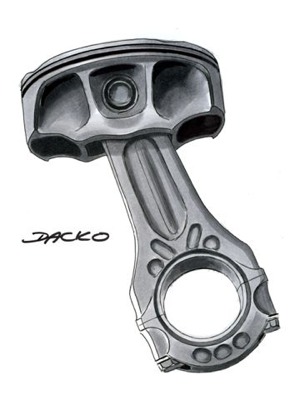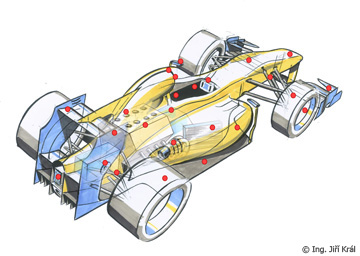Connecting rod
Miroslav Sanytrák/Boris Dacko | 10.2.08 | Válce
F1 constructors
he connecting rod transfers forces from the gudgeon pin to the crankshaft and, at the same time, converts the advance motion of a piston to rotation. The connecting rod is extremely loaded with mechanical stress, as it has to deal with tensioning immediately exchanged for compression stress, but also momentum from the oscillating and rotating motions. Unlike connecting rods of stock cars, the F1 ones show robustness above all, which is mainly the result of much higher stressload, that can be illustrated, for instance, by the speed reached by pistons, which is about 50 m/s. Usual connecting rods are calculated according to a simplified theory, that one third of the rod, at the piston's side, makes an advance motion and the remaining two thirds, closer to the crankshaft, a rotating motion. In reality though, each point of the connecting rod follows its own different and complicated path.
 |
The F1 rods are therefore computed more in detail, which allows to reach the highest possible strength together with the lowest weight. Just like in stock cars, the F1 connecting rod must be parted around the eye of the crankshaft pin, which is a logical result of the imparted design of the crankshaft, as it would be otherwise impossible to fit the connecting rod onto its pin.




